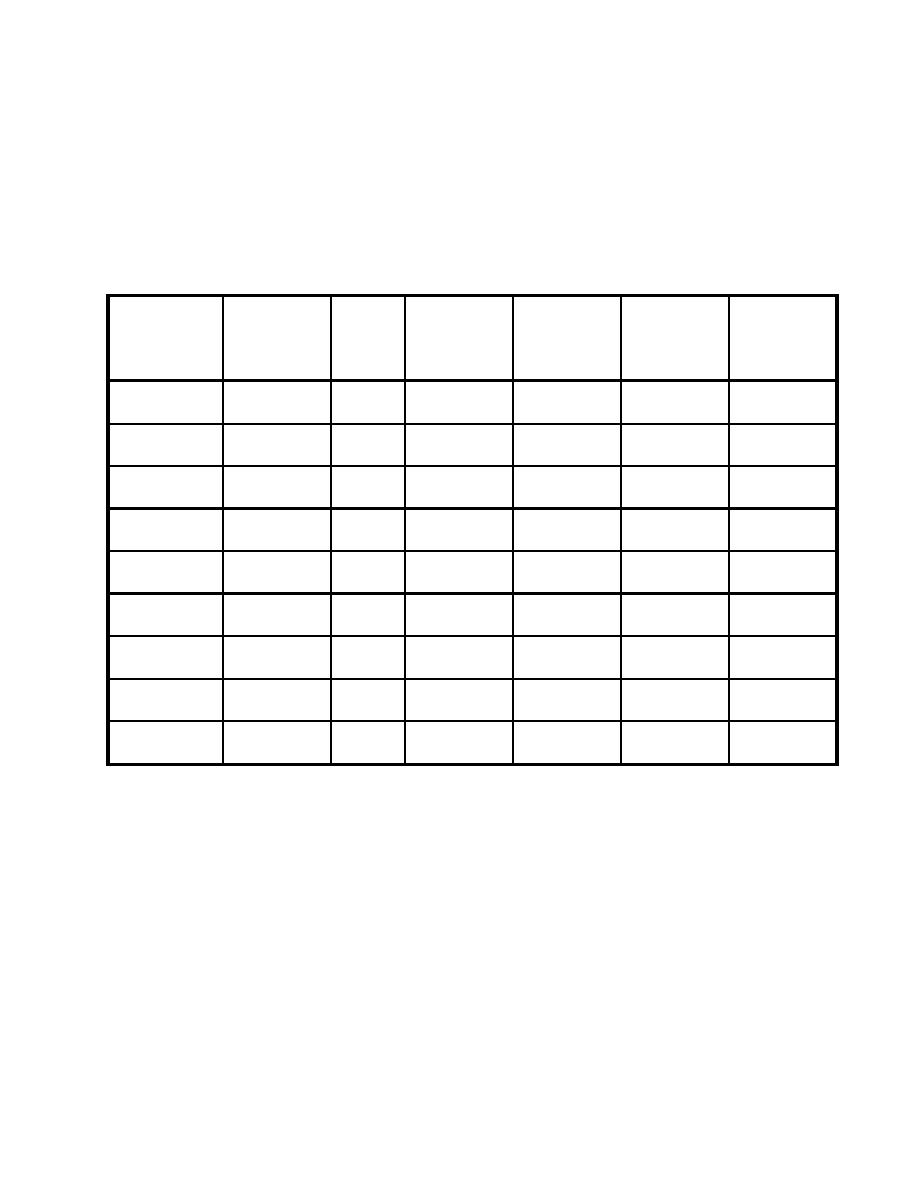

Custom Search
|
|

|
||
 MIL-HDBK-1013/14
APPENDIX D (Continued)
Table D-2
Distances in Feet (Meters) for Peak Pressure from 10,000- to 40,000-Pound
(4,545 to 18,182 kg) Hemispherical TNT Explosions on the Surface
R/W1/3
10,000 lb
20,000 lb
30,000 lb
40,000 lb
Reflected
Incident
(4,545 kg)
(9,091 kg)
(13,636 kg)
(18,182 kg)
Pressure
Pressure
Psi
Psi
(kgf/sq cm)
(kgf/sq cm)
100
500
3.7
80
100
115
126
(7)
(35)
(24.3)
(30.4)
(35.0)
(38.3)
29
91
6
129
163
186
205
(2.0)
(6.4)
(39.2)
(49.5)
(56.5)
(62.3)
12
31
9
194
244
280
308
(0.84)
(2.17)
(59.0)
(74.2)
(85.1)
(93.6)
8.4
15
11
237
298
342
376
(0.59)
(1.05)
(72.0)
(90.6)
(104)
(114)
3.6
8
18
388
488
559
615
(0.25)
(0.56)
(118)
(148)
(170)
(187)
2.3
4.6
24
538
678
777
855
(0.15)
(0.32)
(164)
(206)
(336)
(260)
1.7
3.6
30
646
814
932
1,026
(0.12)
(0.25)
(196)
(247)
(283)
(312)
1.1
2.4
40
862
1085
1242
1,367
(0.08)
(0.17)
(262)
(330)
(377)
(415)
0.8
1.8
50
1,077
1,357
1,553
1,709
(0.06)
(0.13)
(327)
(412)
(472)
(519)
The form of the incident blast wave (Figure D-1) is characterized by an abrupt rise in
pressure to a peak value, a period of decay to ambient pressure, and a period in which the
pressure drops below ambient (negative pressure phase). The negative pressure phase is not
generally important in the design of structures to resist the effects of blast loads. It is primarily
responsible for debris disbursement.
When the incident shock wave strikes the front wall of a structure (assumed to be
parallel to the shock front), an increase in pressure to a higher (reflected) level occurs, as
discussed above. A simplified, idealized illustration of design pressure loading is shown in
Figure D-2. The reflected pressure will decay based on the geometry of the structure.
101
|
 |
|
 |
||